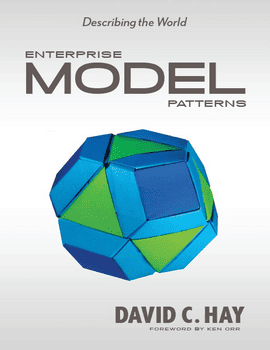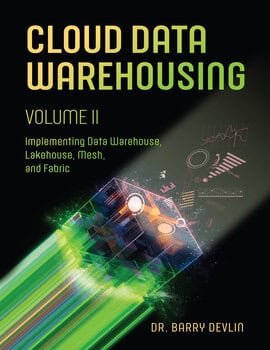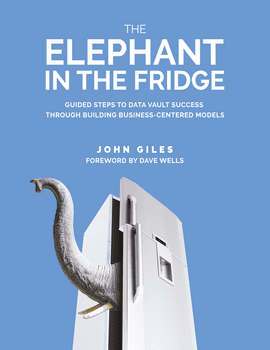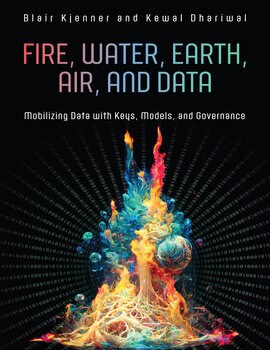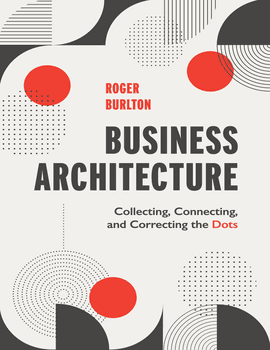Enterprise Model Patterns
Enterprise Model Patterns: Describing the World, by David Hay
Here you’ll find one key to the development of a successful information system: Clearly capture and communicate both the abstract and concrete building blocks of data that describe your organization.
Topics
PART ONE: Introduction
Chapter 1: Data modeling’s promise . . . and failure
Business vs. Systems Issues
Fundamentals of the Business
Clarity
The Response: This Book
Chapter 2: About Conventions
Notation Conventions
UML on the Prowl
Your Author Surrenders
Warning to Data Modelers
Warning to UML Modelers
A Peace Offering
The Notation
Entity Classes (and Objects)
Sub-types and Super-types
Attributes
Relationships
Unique Identifiers
Aesthetic Conventions
Straighten Lines
Starry Skies Orientation
Limit Number of (Highlighted) Boxes
Follow Accepted Graphic Design Principles
Architectural Conventions
About Abstraction
Chapter 3: About This Book
Levels of Abstraction
The Organization of the Book
PART TWO: Level 1 – The Generic Enterprise Model
Chapter 4: People and Organizations (Who)
Parties
Party Relationships
Party Identifiers and Names
Constraints
Party Characteristics
Derived Characteristics
Characteristics and Party Types
Chapter 5: Geographic Locations (Where)
Geographic Location
Geographic Location Relationships
Geographic Names
Geographic Identifiers
Geographic Location Characteristics
Derived Characteristics
Characteristics and Geographic Location Types
Geographic Roles
Chapter 6: Assets (What)
About Assets
Assets, Asset Types, and Asset Specifications
Asset Structures
Naming and Identifying Assets
Describing Assets
Derived Characteristics
Asset Roles
Chapter 7: Activities (How)
Defining Activities
Naming and Identifying Activities
Dividing up Activities
Approach 1 – Steps and Projects
Approach 2 – Activity Structures
Activity Characteristics
Derived Characteristics
Events
Activity Roles
Chapter 8: Timing (When)
Capturing Time with Attributes
Capturing Time with Entity Classes
PART THREE: Level 0 – A Template and Metadata
Chapter 9: The Template
Thing and Thing Type
Things and the Enterprise Model
Thing Relationship
Thing Names and Identifiers
Thing Characteristics
Derived Characteristics
Thing Characteristic Constraints
Thing Role
A Word about Language
Chapter 10: Documents and other Information Resources
Information Resources
Information Resource Relationships
Concepts
Information Resources and Concepts
Distribution
Dispositions
Chapter 11: Accounting
Accounts
Rolling up Accounts
Accounting Transactions
Accounting Transaction Rules
Connections to the Real World
Cost Center Assignments
Transaction Assignments
PART Four: Level 2 – Within an Organization
Chapter 12: Facilities
Parties and Facilities
Addresses
Geographic Locations and Facilities
The Direct Approach (U.S. Version)
The Abstract (International) Approach
Activities and Facilities
Assets and Facilities
Asset Types and Specification Locations
Chapter 13: Human Resources
Employment
Position Assignments
Hiring
Education and Certification
Certification Requirements
Obtaining Certification
Benefits
Payday!
Accounting Implications
Chapter 14: Marketing and Communications
About Communications
Communication Role
Communications Among Sites
Communication Procedures
Advertising and Information Resource
Communication in Context
Events
Chapter 15: Contracts
Contracts
Contract Costs
Employment as a Contract
Delivering Against a Contract
Contract Roles
Chapter 16: Manufacturing
The Manufacturing Process
Routing Steps
Work Orders
Production Work Orders
Dependence
Maintenance Work Orders
Material Usage
Asset Specification Structure
Material Usage Costs
Material Movement
Asset Structure
Utilizing Equipment
Adjustments
Labor Usage
Standard Labor Cost
Actual Labor Cost
Accounting for Manufacturing Costs
Chapter 17: The Laboratory
Samples
Laboratory Tests
Sampling in Context
The Laboratory Model in Context
Observations
Actual Observations
Expected Observations
Parameters and Characteristics
Derived Parameters
PART FIVE: Level 3 – Some Industry-Specific Examples
The Examples
A Word of Advice—and an Invitation
Chapter 18: Criminal Justice
Cases
Evidence and Status
Linking to the Enterprise Model
Events
People and Organizations
Characteristics and Categories
Employment
Roles
Chapter 19: Microbiology
Basic Chemistry
Biochemistry
What Life is Made of
How Life is Organized
Composition
Physical Structures
Packaged Products
Chapter 20: Banking
Instruments and Instrument Specifications
About Financial Instruments
Instrument Characteristics
Characteristic Values
Instrument Categories
Marketing Relationships
Instrument Components
Agreements
Roles
Delivering Against Instruments
Geography and Currency
Guidance Facility
Banking and the Enterprise Model
Agreements and Asset Types
Roles and Activities
Chapter 21: Oil Field Production
Facilities
Surface Facilities
Completions
Purposes and Products
Well Assemblies
Well Assemblies in Facilities
Well Assembly Structure
Well Assembly Characteristics
Chapter 22: Highway Maintenance
Paths
Complex Paths
Locating Nodes Geographically
Grade Separated Crossings
Flows
Physical Assets
A Final Word About Identifiers
In 1995, David Hay published Data Model Patterns: Conventions of Thought – the groundbreaking book on how to use standard data models to describe the standard business situations. Enterprise Model Patterns: Describing the World builds on the concepts presented there, adds 15 years of practical experience, and presents a more comprehensive view.
You will learn how to apply both the abstract and concrete elements of your enterprise’s architectural data model through four levels of abstraction:
Level 0: An abstract template that underlies the Level 1 model that follows, plus two meta models:
- Information Resources. In addition to books, articles, and e-mail notes, it also includes photographs, videos, and sound recordings.
- Accounting. Accounting is remarkable because it is itself a modeling language. It takes a very different approach than data modelers in that instead of using entities and entity classes that represent things in the world, it is concerned with accounts that represent bits of value to the organization.
Level 1: An enterprise model that is generic enough to apply to any company or government agency, but concrete enough to be readily understood by all. It describes:
- People and Organization. Who is involved with the business? The people involved are not only the employees within the organization, but customers, agents, and others with whom the organization comes in contact. Organizations of interest include the enterprise itself and its own internal departments, as well as customers, competitors, government agencies, and the like.
- Geographic Locations. Where is business conducted? A geographic location may be either a geographic area (defined as any bounded area on the Earth), a geographic point (used to identify a particular location), or, if you are an oil company for example, a geographic solid (such as an oil reserve).
- Assets. What tangible items are used to carry out the business? These are any physical things that are manipulated, sometimes as products, but also as the means to producing products and services.
- Activities. How is the business carried out? This model not only covers services offered, but also projects and any other kinds of activities. In addition, the model describes the events that cause activities to happen.
- Time. All data is positioned in time, but some more than others.
Level 2: A more detailed model describing specific functional areas:
- Facilities
- Human Resources
- Communications and Marketing
- Contracts
- Manufacturing
- The Laboratory
Level 3: Examples of the details a model can have to address what is truly unique in a particular industry. Here you see how to address the unique bits in areas as diverse as:
- Criminal Justice. The model presented here is based on the “Global Justice XML Data Model” (GJXDM).
- Microbiology
- Banking. The model presented here is the result of working for four different banks and then adding some thought to come up with something different from what is currently in any of them.
- Highways. The model here is derived from a project in a Canadian Provincial Highway Department, and addresses the question “what is a road?”
About Dave
Since the early 1980s, David Hay has been a pioneer in the use of process and data models to support strategic planning, requirements analysis, and system design. He has developed enterprise models for many industries, including, among others, pharmaceutical research, oil refining and production, film and television, and nuclear energy. In each case, he found the relatively simple structures hidden in formidably complex situations. Mr. Hay has published several books and numerous articles. He is a frequent speaker at professional society conferences.
Faculty may request complimentary digital desk copies
Please complete all fields.
